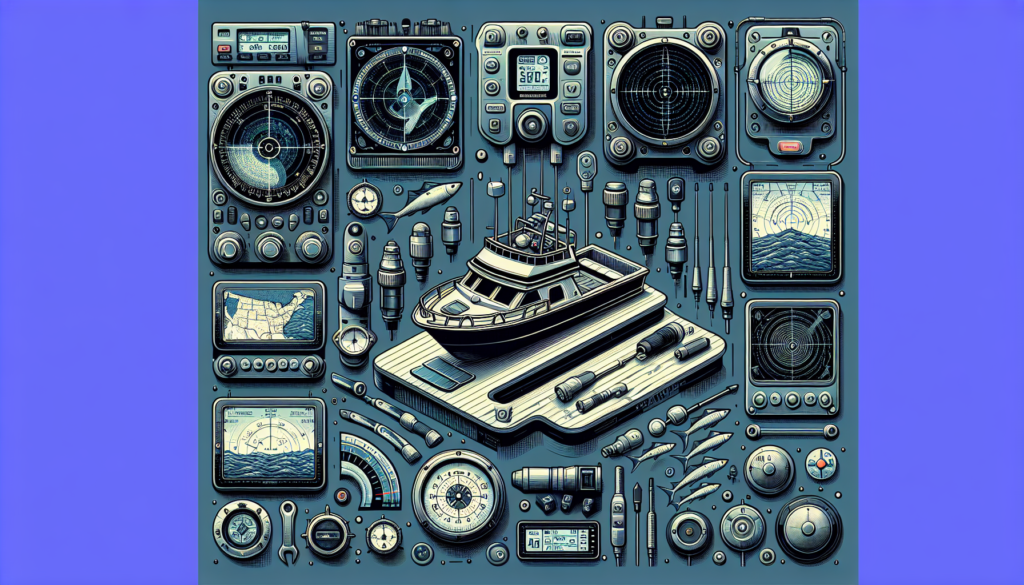Exploring the Depths of Marine Electronics
Imagine sailing across the vast expanse of the ocean, surrounded by nothing but water as far as the eye can see. In such moments, it’s not just the wind in your sails or the waves beneath your hull that keep you safe and on course it’s also the cutting-edge technology of marine electronics. From GPS systems to radar, sonar, and more, these sophisticated devices play a crucial role in ensuring the safety, efficiency, and success of maritime endeavors. In this comprehensive guide, we will delve deep into the world of marine electronics, exploring their history, applications, controversies, and future trends.
The Evolution of Marine Electronics
Marine electronics have come a long way since their humble beginnings. In the early days of seafaring, sailors relied on rudimentary tools like compasses and sextants to navigate the treacherous waters. However, as technology advanced, so too did the capabilities of marine electronics. The invention of the radio in the early 20th century revolutionized communication at sea, allowing ships to stay in touch with each other and with shore-based stations. In the decades that followed, radar, sonar, and GPS systems were introduced, further enhancing the safety and efficiency of maritime operations.
Today, marine electronics encompass a wide range of devices and systems, from chartplotters and fishfinders to AIS (Automatic Identification System) transponders and ECDIS (Electronic Chart Display and Information System). These technologies have not only made navigation easier and more accurate but have also transformed the way we explore and exploit the world’s oceans.
The Role of Marine Electronics in Modern Navigation
One of the key functions of marine electronics is navigation. GPS systems, in particular, have revolutionized the way sailors determine their position at sea. By triangulating signals from a network of satellites, GPS devices can pinpoint a ship’s location with remarkable accuracy. This not only helps sailors stay on course but also enables them to avoid hazards like reefs, rocks, and other vessels.
In addition to GPS, radar and sonar systems are also essential tools for modern navigation. Radar uses radio waves to detect objects in the ship’s vicinity, helping sailors navigate through fog, darkness, and other conditions where visibility is limited. Sonar, on the other hand, uses sound waves to map the seafloor and detect underwater obstacles like reefs and wrecks. Together, these technologies provide sailors with a comprehensive picture of their surroundings, allowing them to navigate safely and efficiently.
Applications of Marine Electronics in Fishing
Marine electronics are not just limited to navigation they also play a crucial role in fishing. Fishfinders, for example, use sonar technology to locate schools of fish beneath the surface of the water. By analyzing the echoes of sound waves bouncing off fish and other underwater objects, fishfinders can help fishermen identify the most productive fishing grounds. This not only saves time and fuel but also increases the chances of a successful catch.
In addition to fishfinders, marine electronics also include devices like chartplotters, which display detailed maps of the seafloor, coastline, and other relevant information. By combining GPS, radar, and sonar data, chartplotters provide fishermen with a comprehensive view of their surroundings, helping them navigate to the best fishing spots with ease.
Challenges and Controversies in Marine Electronics
While marine electronics have greatly enhanced the safety and efficiency of maritime operations, they are not without their challenges and controversies. One of the main concerns is the reliance on these technologies, which can sometimes lead to complacency among sailors. In some cases, sailors may become overly reliant on GPS and other electronic aids, neglecting traditional navigation skills like dead reckoning and celestial navigation. This can be dangerous, especially in the event of a system failure or malfunction.
Another issue is the potential for interference with marine electronics. Radio waves, electromagnetic fields, and other sources of electromagnetic radiation can disrupt the operation of GPS, radar, and other electronic devices, leading to inaccuracies or malfunctions. This is particularly concerning in areas with high levels of radio frequency interference, such as near airports, military installations, or other sources of electromagnetic radiation.
The Future of Marine Electronics
Despite these challenges, the future of marine electronics looks bright. Advances in technology, such as the development of more accurate and reliable GPS systems, improved radar and sonar capabilities, and the integration of artificial intelligence, are poised to further enhance the safety and efficiency of maritime operations. In the coming years, we can expect to see even more sophisticated and intelligent marine electronics that will revolutionize the way we navigate, explore, and exploit the world’s oceans.
As we look to the horizon, it’s clear that marine electronics will continue to play a vital role in the future of maritime endeavors. From navigation to fishing, safety to efficiency, these technologies are the backbone of modern seafaring and with each new innovation, they are helping to shape the future of the maritime industry.
Conclusion
To wrap things up, marine electronics are a crucial component of modern maritime operations, providing sailors with the tools they need to navigate safely and efficiently. From GPS systems to radar, sonar, and more, these technologies have revolutionized the way we explore and exploit the world’s oceans. While there are challenges and controversies surrounding marine electronics, the future looks promising, with advances in technology poised to further enhance the safety and efficiency of maritime operations. As we set sail into the future, one thing is clear marine electronics will continue to play a vital role in shaping the maritime industry for years to come.



